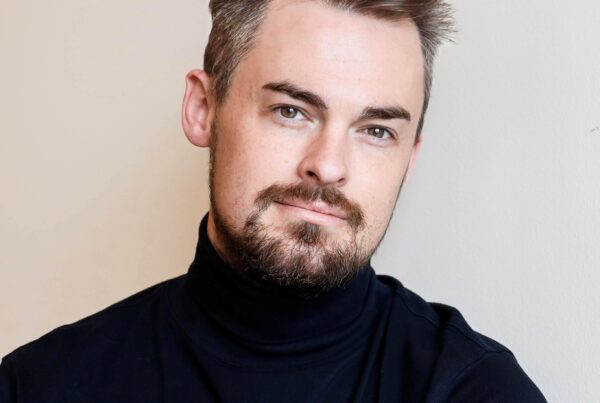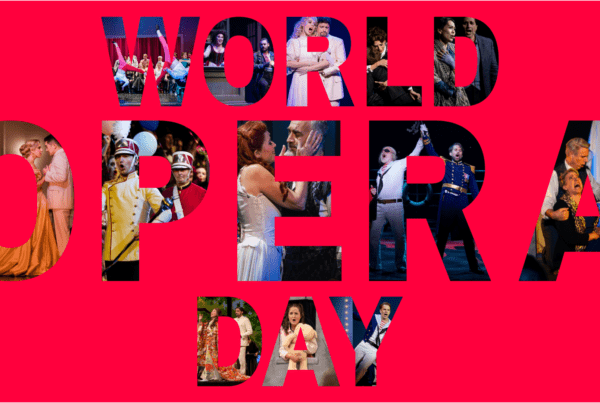How Verdi used music and language to reinterpret one of Shakespeare’s most famous plays
Chances are you know the story of Macbeth. Whether you studied the play at school, have seen one of the many film adaptations or been lucky enough to attend a live performance, Macbeth is one of Shakespeare’s most famous plays.
The opera, however, is relatively less well known. Though he was born 250 years later, Verdi was an ardent admirer of Shakespeare and was first introduced to the Bard when he was privileged to attend performances by Victorian-age acting troupes touring Italy. In 1847, he wrote his opera to a libretto based on Italian translations of the play. He wasn’t to see Shakespeare’s Macbeth on the stage until June 1847, shortly after the premiere of the opera, when he was visiting London.
Macbeth was the first of Verdi’s operatic adaptations of Shakespeare’s work, followed by Otello (1887) and Falstaff (based on Merry Wives of Windsor in 1893). He also attempted King Lear but it never came to fruition.
Verdi had enormous respect for Shakespeare as a dramatist. While writing Macbeth, he did lots of research into how the play was performed so he could make his opera similar and pay respect to the original format. The plot is dark and foreboding, the themes are intriguing and ominous, yet it never fails to entertain, enthral and intrigue.
But how does Verdi’s opera differ to Shakespeare’s play? The most obvious answer is, being an opera, it is sung. But the plot, themes and style rarely stray from the original tragedy.
Verdi wanted an increased emphasis on emotional realism in opera. He deftly used music and voice types to intelligently portray the characters and themes of the play and allow the audience to understand the manner of each character or chorus part.
Here we look at Verdi’s use of music and voice to represent and symbolise different personas, using operatic traditions, music and language to individualise characters, their behaviours and how they affect the plot and drama of the opera Macbeth.
Warning: some spoilers this way come!
Macbeth (baritone)
Macbeth: a puppet of prophecy, master of his own destiny, or somewhere in between?
The morally ambiguous Macbeth is a baritone, sitting between tenor and bass. Baritones can be loyal or treacherous, the best character on stage or the worst, a voice type perfect for Macbeth’s duplicitous character.
He is the anti-hero, the title character who allows the audience to see his struggles, his intrigues and his villainy. But he is never comfortable with his actions, constantly cajoled by Lady Macbeth or fed further prophecy by the witches. We are never sure if he is acting for himself or for (or because of) others.
In Act 4, Macbeth sings his death aria ‘Pietà, rispetto, amore’ (‘Compassion, respect, love’) and asks for redemption. Macbeth is trapped in his castle by a revolt of the Scottish noblemen. He feels like he may lose his life before the rebellion ends and, even if he doesn’t, he will never be loved by those he has left behind. He laments his fate. He shows remorse. But is it enough to forgive him?
Lady Macbeth (soprano)
Lady Macbeth is an enigma. The role has an enormous vocal range and has been sung by both sopranos and mezzo-sopranos, though much of her music lies in a lower range more typical for morally questionable or villainous mezzo-sopranos. Verdi gave her lots of showy music, where technique and register portray her hunger for and crazed pursuit of power.
In Act 1, she receives Macbeth’s letter telling her about the witches’ prophecy. Verdi has her speak the letter above a long, held chord by the orchestra, rather than singing at this point. She then begins her two-part aria ‘Vieni, t’affretta!’ (‘Come, hurry’!) telling Macbeth to take the prophesised honours. Verdi then uses a cabaletta, a rapid, repetitive, and technically challenging section of an aria normally used to indicate a change in mood, for her turn towards evil.
Typically, Lady Macbeth is sung by a dramatic coloratura soprano, a voice type which has both enormous dramatic power and the agility and flexibility of lighter voice types. In the sleepwalking scene in Act IV, Verdi exploits that power and flexibility to convey Lady Macbeth’s madness, not by giving her the extravagantly ornamented (coloratura) music typical of 19th-century mad scenes, but by pushing the voice to extremes of range and expressive colour. Over the course of the scene he asks her to sing in a whisper, and then at the top of her voice, other times ‘with terror’ or ‘with grief’, or with a dark, hollow sound, dying away. Her final, very high, note, is to be sung ‘on a thread of voice’. Writing of this scene, Verdi said that it ‘definitely must not be sung’ but rather ‘acted and declaimed’.
The Witches (three-part female chorus)
“Double, double toil and trouble”, who could forget the incantations of those three witches born from Shakespeare’s pen? Verdi, however, didn’t feel three was enough, and instead turns up the volume by conjuring an entire coven of witches to taunt Macbeth.
A three-part female chorus (one representing each witch from the play who sing “I” and not ”we”), fills the stage and mocks Macbeth with its visions.
Where it would make little sense in Shakespeare’s theatre to have a crowd of people on stage saying the same thing, the chorus in Verdi’s Macbeth becomes a character in itself, delivering drama and volume worthy of grand opera.
In Act 3, when the witches deliver their final visions to Macbeth, the power, the menace and the threat of the chorus elevates the character of the witches to a whole other level. They rule the drama of the entire piece and capture the majesty and magic of the tragedy with the power of their voices.
Banquo (bass)
We meet Banquo along with Macbeth in the very first scenes of the opera when they are delivered the first prophecy by the witches. Banquo represents Macbeth’s opposite, what he could be if he didn’t act on temptation.
Banquo is played by a bass, the lowest of male voices, and is written to sound different to Macbeth. Banquo’s children are prophesised to inherit the Scottish throne, making the selection of voice type for Banquo apt with the bass quality used to represent the nobility and integrity of the character and his children.
In Act 2, Banquo sings ‘Come dal ciel precipita’ (‘How it falls from the sky’) where he fears for his future and that of his children. He sings to Fleance, his son, in a soft, fatherly tone an aria of lament, fear and foreboding. The quality of the bass aria beautifully reflects a tender father-son moment which is violently and shockingly ended all too soon by Macbeth’s band of murderers.
Macduff (tenor)
The tenor voice part, typical for romantic male leads, here belongs to Macduff (and also Malcolm), reinforcing his nobility and goodness. The hero juxtaposes Macbeth’s dubious baritone with the soaring notes and smooth quality which a tenor can bring.
Like Shakespeare’s soliloquies, Verdi gives his soloists room to explore emotions and meaning with depth. In some cases, however, he gives characters more space than in the original work. In Shakespeare, when Macduff learns that his wife and children have been murdered, all he can do is take in the news, struggling to comprehend the rage and horror. Verdi however gives him time in ‘Ah, la paterna mano’ (‘Ah, the paternal hand’) to grieve more fully. Librettist Francesco Maria Piave’s text, too, is heartbreaking: Macduff sings “The paternal hand that didn’t defend you” as he imagines his young children calling out for him with their last breath.
This aria, with its tenor quality and carefully constructed lyric, reinforces the audience’s horror at Macbeth’s tyranny and wicked ways, and allows the story to advance the two rivals to their final fateful meeting.
Macbeth was Verdi’s first interpretation of a Shakespeare play, and he maintained his admiration for Shakespeare’s language and dramatic storytelling throughout. Verdi employed many operatic conventions (including the different tools of arias, duets, ensembles, choruses, offstage effects, and his choice of voice types) to reflect the different characters and took advantage of the full orchestra to create powerful, spine-tingling moments. He also experimented with musical form so that his opera could respect the structures of the play. His emphasis is on music which brings a realistic, emotional emphasis to the story, giving the audience a heady and exciting theatrical experience.



